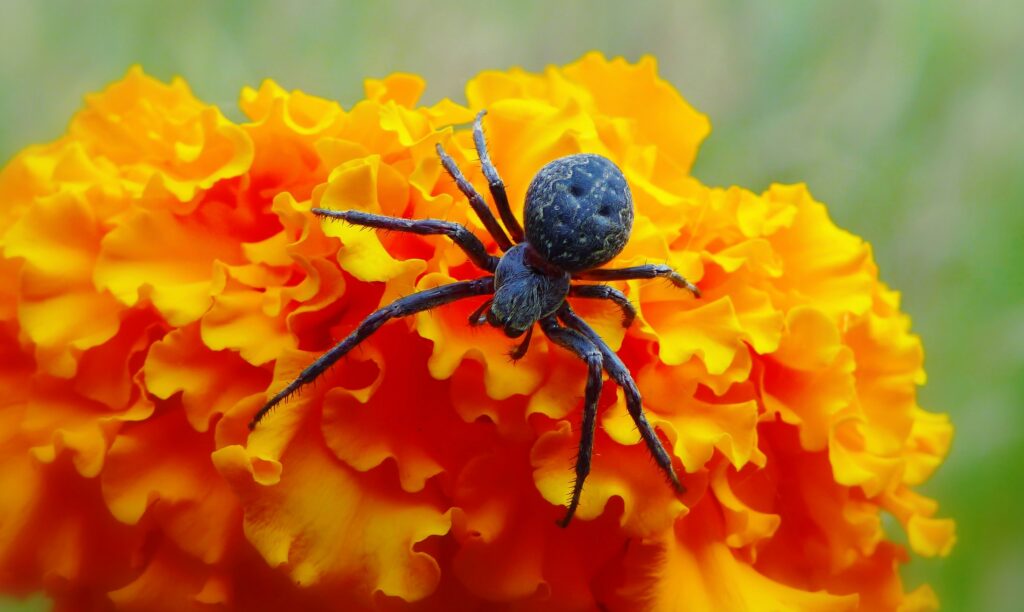In the vast tapestry of the natural world, few creatures challenge our perceptions quite like spiders. Often feared and misunderstood, these eight-legged arthropods include some of the most visually stunning animals on our planet. While venomous species often grab headlines, the world of non-venomous spiders offers an extraordinary palette of colors that rivals any rainbow. From iridescent blues and vibrant yellows to striking patterns that would make any artist envious, these harmless arachnids demonstrate nature’s artistic prowess. This article explores some of the most colorful non-venomous spiders across the globe – living jewels that often go unnoticed despite their flamboyant appearances. By highlighting these creatures, we hope to foster appreciation for these beneficial, beautiful members of our ecosystem that help control insect populations while posing little threat to humans.
Peacock Spiders: Nature’s Tiny Dancers
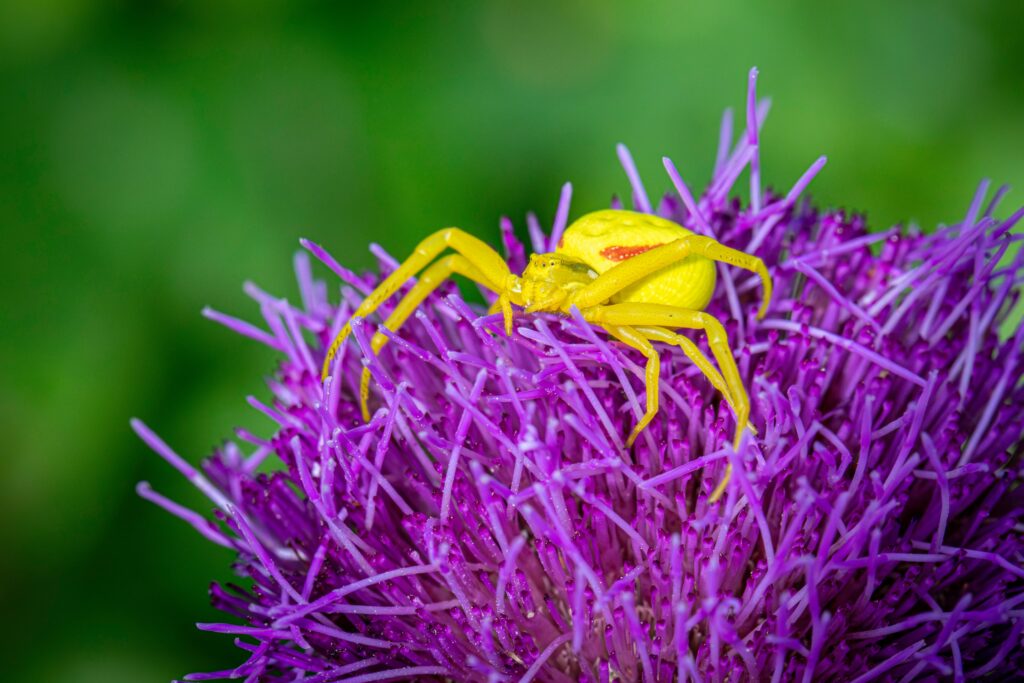
Perhaps the most famously colorful non-venomous spiders are the peacock spiders (Maratus genus), native to Australia. Males of these diminutive jumping spiders, typically measuring less than 5mm, display extraordinary abdominal flaps decorated with electric blues, vibrant reds, and brilliant yellows—colors that would make even the most flamboyant peacock envious. What makes these spiders particularly fascinating is not just their colors, but how they use them; males perform elaborate courtship dances, raising their colorful abdomens and waving specialized legs to attract females. The scientific community and general public alike have fallen in love with these charismatic micro-arachnids, with newly discovered species regularly making headlines for their unique patterns and behaviors. Their harmless nature and tiny size make them beloved subjects for macro photographers worldwide who capture their jewel-like qualities.
Orchid Spiders: Floral Mimics
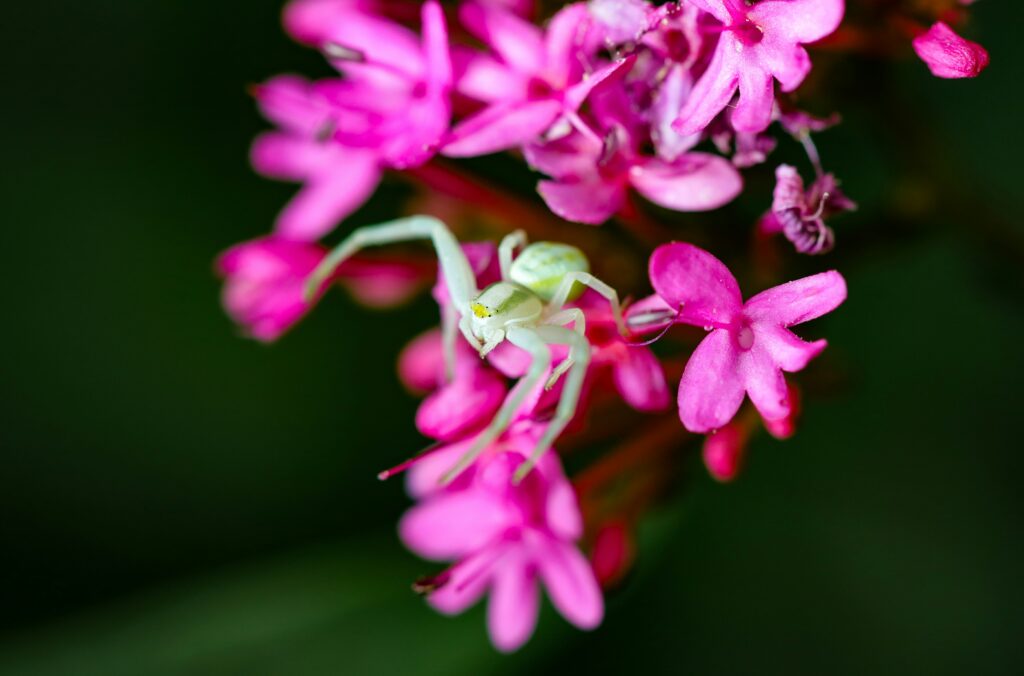
Orchid spiders (Orchidaceae family) represent some of nature’s most sophisticated mimicry, with bodies that have evolved to resemble the vibrant flowers they inhabit. Their exquisite pink, white, and yellow colorations allow them to blend seamlessly with orchid petals, creating a deadly trap for pollinating insects that mistake them for part of the flower. Despite their predatory nature toward insects, these spiders are completely harmless to humans, possessing neither venom potent enough nor fangs large enough to cause any concern. Most orchid spiders are found in tropical environments throughout Southeast Asia, where biodiversity of both spiders and orchids reaches its peak. The remarkable evolutionary convergence that has shaped their appearance demonstrates the power of natural selection to create beauty with practical purpose—in this case, the perfect disguise.
Golden Silk Orb-Weavers: Spiders of Precious Metal
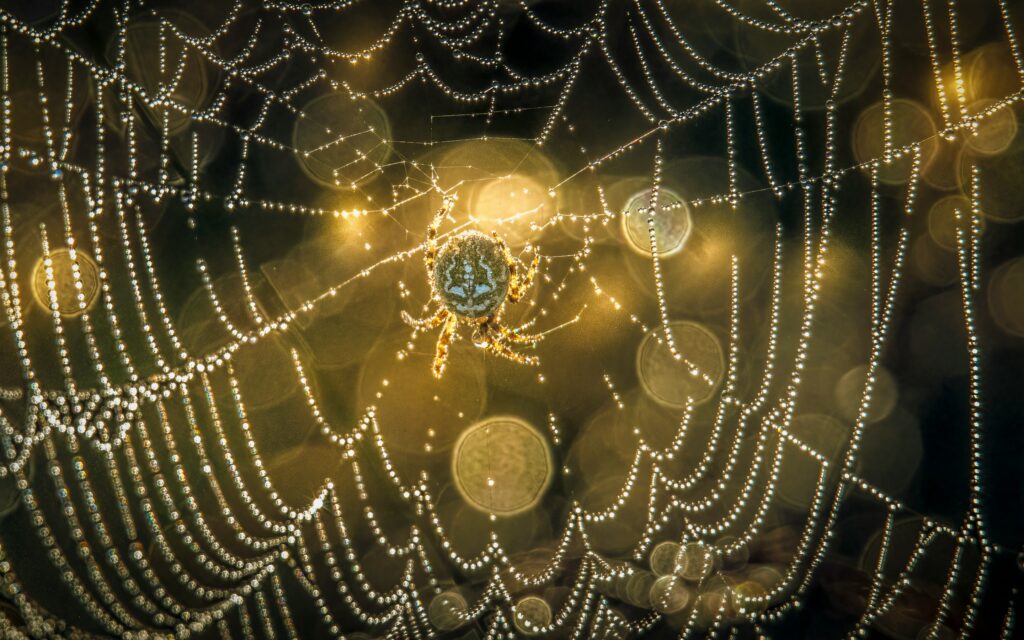
The golden silk orb-weavers (Nephila genus) earn their name from the spectacular golden-hued silk they produce to construct their massive webs. Beyond their remarkable silk, these spiders themselves display striking colors, with females exhibiting bodies adorned with patterns of yellow, orange, and sometimes red against contrasting black or deep brown backgrounds. These impressive arachnids can reach sizes that make them impossible to miss, with leg spans extending up to 20 centimeters in some species, making them among the largest web-building spiders globally. Despite their intimidating size, golden silk orb-weavers are gentle giants, posing no significant threat to humans and preferring to retreat rather than engage when disturbed. Found across tropical and subtropical regions worldwide, these spiders create webs strong enough to occasionally catch small birds, though they primarily feed on large insects.
Happy Face Spiders: Hawaii’s Smiling Arachnids

The happy face spider (Theridion grallator), endemic to the Hawaiian islands, features one of the most whimsical patterns in the spider world. These small arachnids, measuring less than a centimeter, display a remarkable variety of yellow, red, and black patterns on their abdomens, with some individuals sporting markings that remarkably resemble a smiling face. Scientists have studied these spiders extensively because they exhibit incredible pattern polymorphism—meaning populations show extreme variation in their appearance, with over 20 distinct pattern morphs identified. This diversity is believed to help protect them from predators who might otherwise learn to recognize and target a consistent pattern. These charming spiders inhabit the undersides of leaves in Hawaii’s native forests, where they construct small webs and lead peaceful lives capturing tiny insects, completely harmless to humans and larger animals.
Candy-Striped Spiders: Nature’s Peppermint Design
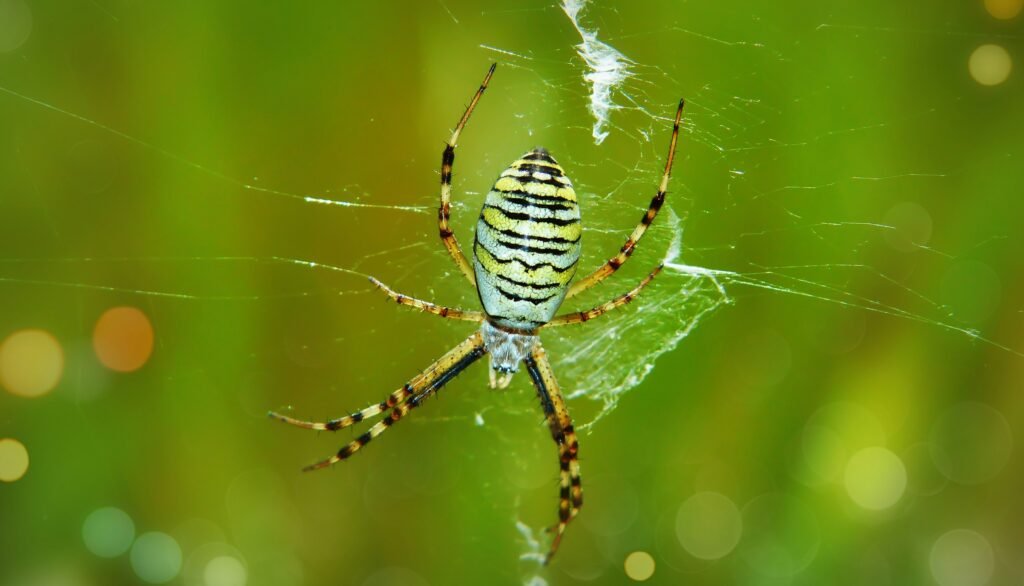
Candy-striped spiders (Enoplognatha ovata) bring a festive appearance to gardens across Europe and North America with their distinctive peppermint-like coloration. Their abdomens feature a cream or white background adorned with bright red or pink stripes running longitudinally, creating a pattern reminiscent of candy canes or peppermint sweets. These modest-sized spiders, typically measuring about 5-7mm, belong to the cobweb spider family and construct irregular webs in low vegetation where they patiently wait for small insects. The vibrant coloration varies significantly between individuals, with some displaying bold stripes while others show more subtle markings or even completely pale bodies. Despite their sweet appearance, candy-striped spiders perform an important ecological role by controlling populations of aphids and other small garden pests without posing any threat to gardeners or pets.
Ladybird Spiders: Arachnid Impersonators

Ladybird spiders (Eresus species) feature some of the most striking sexual dimorphism in the spider world, with males sporting brilliant red abdomens adorned with distinct black spots that evolved to mimic toxic ladybird beetles. This remarkable example of Batesian mimicry helps protect these otherwise vulnerable spiders from predators who have learned to avoid the similarly-colored beetles. In dramatic contrast, females are entirely black or dark brown, significantly larger, and spend most of their lives in underground burrows. These spiders, native to Europe and parts of Asia, belong to the velvet spider family and create silk-lined tunnels from which they emerge to hunt rather than building traditional webs. While technically possessing venom like almost all spiders, ladybird spiders are not dangerous to humans and rarely bite, preferring to retreat when threatened.
Crab Spiders: Masters of Color Change
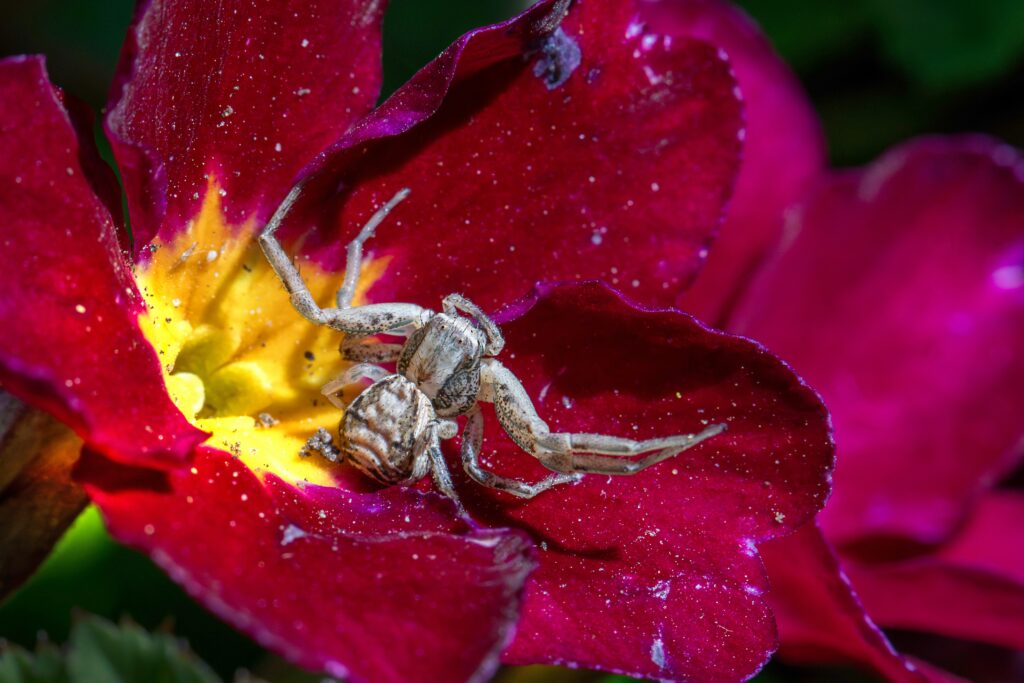
Crab spiders (Thomisidae family) represent nature’s chameleons in the spider world, with many species capable of gradually changing their color to match their surroundings. Species like the goldenrod crab spider (Misumena vatia) can transform from brilliant white to vibrant yellow over several days, allowing them to hide among different colored flowers as they ambush pollinating insects. This remarkable ability stems from special pigments in their epidermis that they can concentrate or disperse based on visual feedback from their surroundings. Most crab spiders feature stout bodies with legs that extend sideways like those of crabs, allowing them to move laterally with surprising speed and agility. Their ability to blend into flowers while displaying striking colors themselves makes them both predators and living artwork, catching the eye of human observers just as they catch unsuspecting insect prey.
Jewel Spiders: Living Gemstones

Jewel spiders (Austracantha minax and related species) deserve their name with abdomens that appear to be crafted from polished metal or precious stones. These distinctive Australian orb-weavers possess spiny, hardened abdomens that shine with metallic silver, gold, or copper hues that glisten dramatically in sunlight. Their abdomens often feature striking geometric patterns with contrasting colors that make them look more like decorative objects than living creatures. Despite their ornate appearance, jewel spiders construct conventional orb webs between vegetation where they capture flying insects with remarkable efficiency. These spiders represent an evolutionary marvel where natural selection has produced an armor-like exterior that not only protects them from predators but does so with extraordinary beauty. Though they possess venom for subduing prey, jewel spiders are not considered dangerous to humans and serve beneficial roles in controlling insect populations.
Mirror (Sequined) Spiders: Nature’s Disco Balls
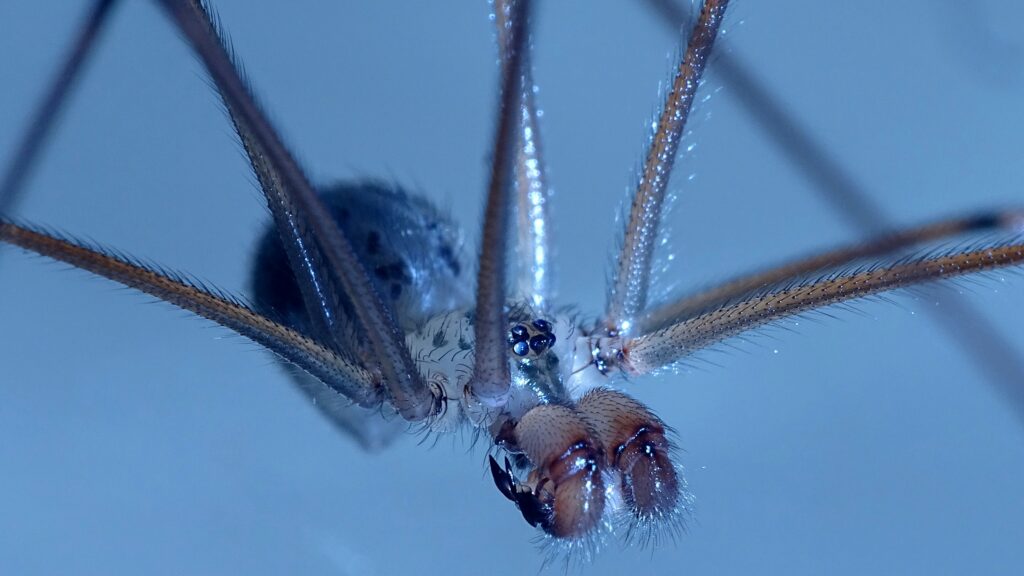
Mirror spiders (Thwaitesia species) possess one of the most unusual and spectacular forms of coloration in the animal kingdom, with abdomens covered in reflective silvery patches that resemble sequins or mirrors. What makes these spiders particularly remarkable is their ability to manipulate these reflective patches, expanding or contracting them to alter their appearance in response to perceived threats. When disturbed, these tiny spiders (typically measuring 3-5mm) can pull these reflective plates closer together, creating an intensely bright, mirror-like surface that confuses predators. Native to Australia and parts of Asia, mirror spiders inhabit tropical and subtropical forests where their reflective qualities help them blend with dew drops or scattered light patterns on vegetation. Despite their flashy appearance, these spiders lead relatively secretive lives and construct small, inconspicuous webs to capture prey many times smaller than themselves.
Woodlouse Spiders: Unexpected Crimson Beauties
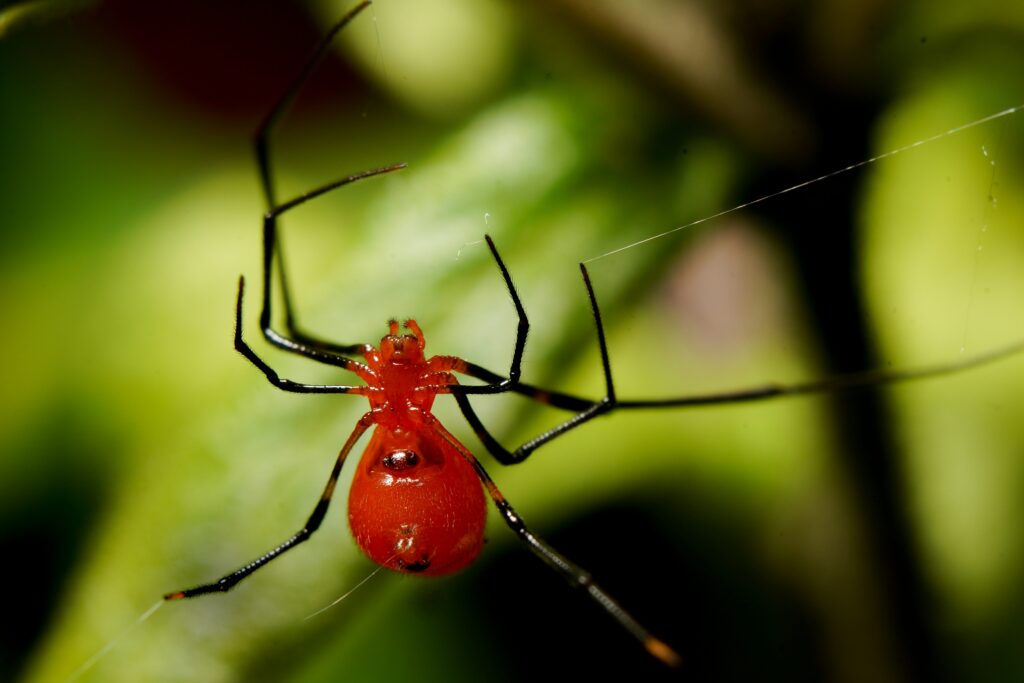
The woodlouse spider (Dysdera crocata) may not display the pattern complexity of other spiders on this list, but its striking cherry-red cephalothorax and legs combined with a cream or tan abdomen make it unmistakable. These distinctive spiders have evolved specialized elongated fangs designed specifically for piercing the tough exoskeletons of woodlice (also known as pill bugs or roly-polies), which form their primary diet. Despite these impressive fangs and their somewhat intimidating appearance, woodlouse spiders pose very little threat to humans, with bites reported as no more painful than a mild bee sting and causing no lasting effects. These colorful hunters don’t build webs but instead actively hunt their prey at night, using their six powerful legs to move quickly when pursuing woodlice. Their unusual dietary specialization and striking coloration make them fascinating residents of gardens, woodpiles, and natural areas across Europe, North America, and parts of Australia where they’ve been introduced.
Hawaiian Garden Spiders: Pacific Kaleidoscopes
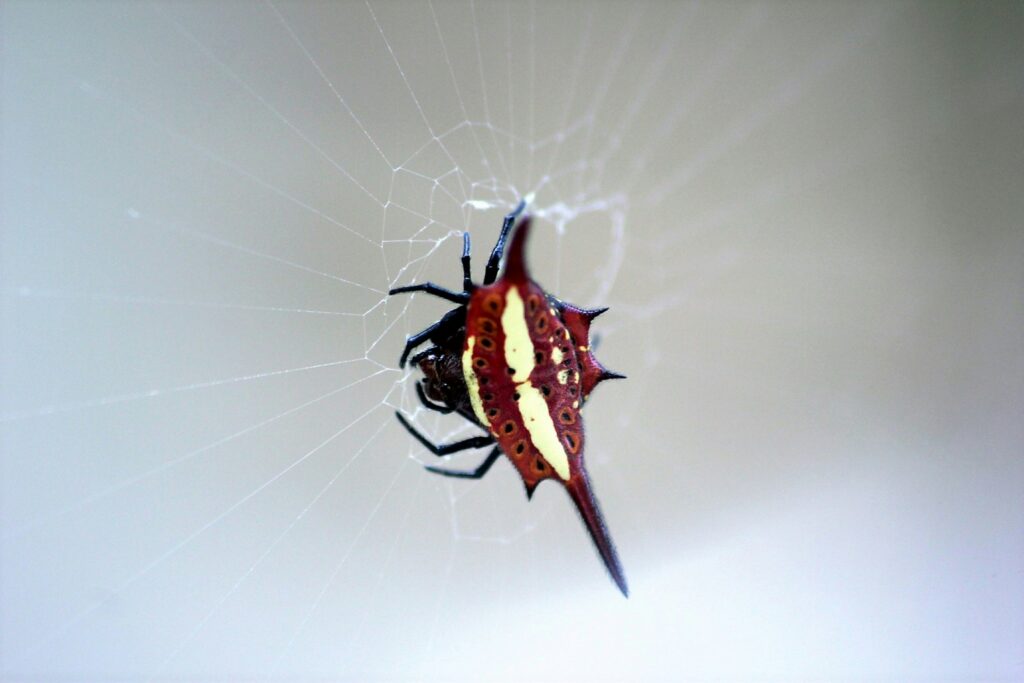
The Hawaiian garden spider (Argiope appensa) transforms garden spaces with its impressive size and striking black and yellow patterns reminiscent of warning hazard signs. Females, which can reach sizes up to 2.5 inches across with legs extended, feature distinctive alternating black and bright yellow stripes on their abdomens, often arranged in complex geometric patterns that vary between individuals. These large orb-weavers construct spectacular webs with distinctive zigzag patterns of silk called stabilimenta that are thought to prevent birds from flying through the webs while also attracting insect prey. Despite their imposing appearance, these colorful giants are gentle by nature, not aggressive toward humans, and will typically retreat or drop from their webs when disturbed. Their presence in gardens throughout Hawaii and other Pacific islands is beneficial, as they consume large numbers of flying insects including agricultural pests.
Jotus Remus: The Paddle-Waving Wonder
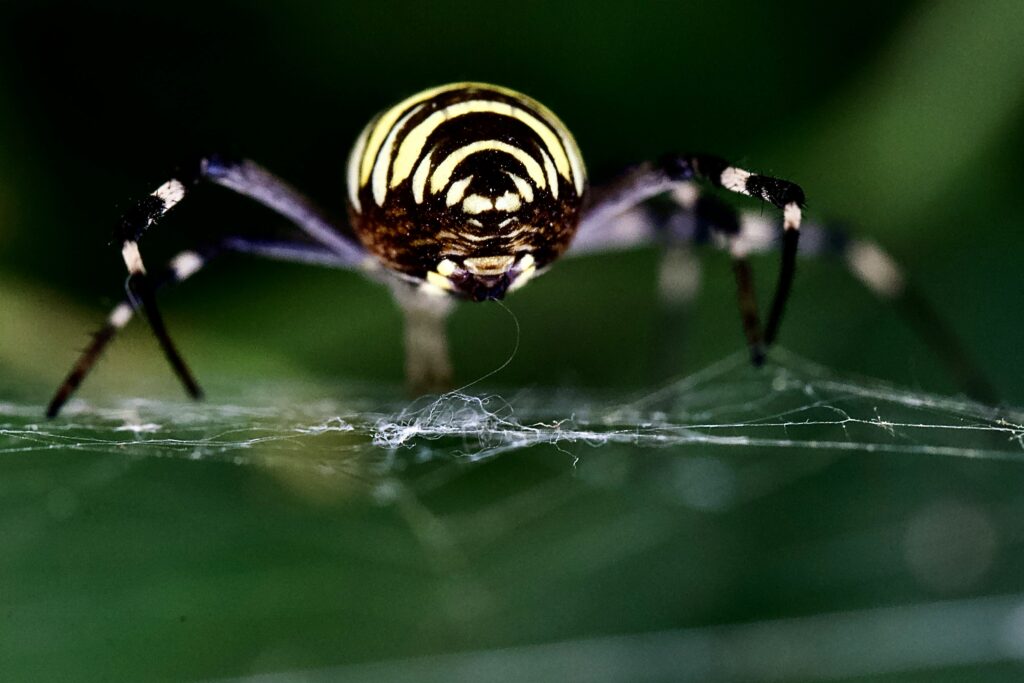
Discovered relatively recently in 2016, Jotus remus is a jumping spider species from Australia that has captured public imagination with both its colors and unique courtship behavior. Males display vibrant patterns of blue, red, and white on their abdomens and possess specialized paddle-shaped structures on their third pair of legs that they wave elaborately during mating displays. These paddles, reminiscent of ping-pong rackets, are bordered with fine white hairs and flashed dramatically to catch the attention of prospective mates. The spiders’ faces feature striking patterns of blue and white that give them an expressive, almost cartoon-like appearance that has endeared them to researchers and spider enthusiasts alike. Like other jumping spiders, Jotus remus possesses excellent vision through large forward-facing eyes, uses no web for hunting, and instead relies on its remarkable jumping ability to pounce on prey with precision.
The Ecological Importance of Colorful Spiders
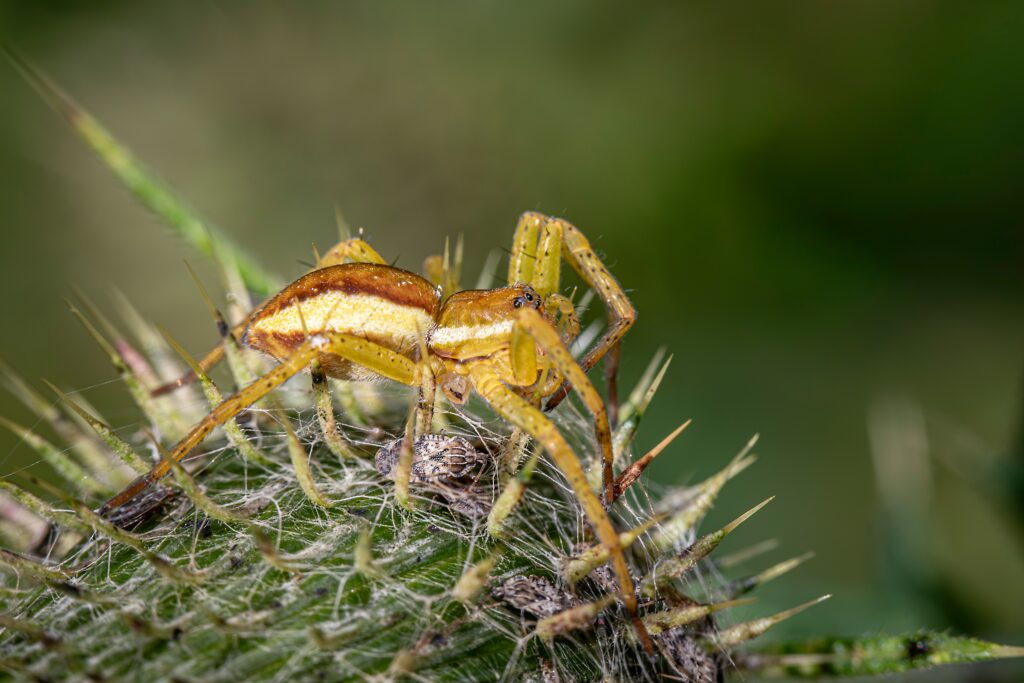
The vibrant colors of non-venomous spiders serve multiple ecological functions beyond simply dazzling human observers. For many species, bright coloration acts as aposematic (warning) signals that mimic dangerous creatures, effectively borrowing the protection of truly venomous animals without possessing the same level of toxicity. Other species use their colors for camouflage, whether matching flowers perfectly to ambush pollinators or blending with colorful forest environments to avoid becoming prey themselves. Perhaps most importantly, these colorful arachnids play crucial roles in controlling insect populations, with a single spider capable of consuming hundreds of insects during its lifetime, including many species humans consider pests. The distinctive appearance of these spiders also makes them important “flagship species” that can generate public interest in conservation efforts—people are more likely to protect what they find beautiful, and these spiders certainly qualify as natural living art forms.

